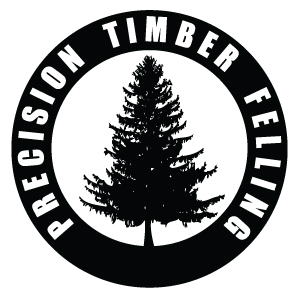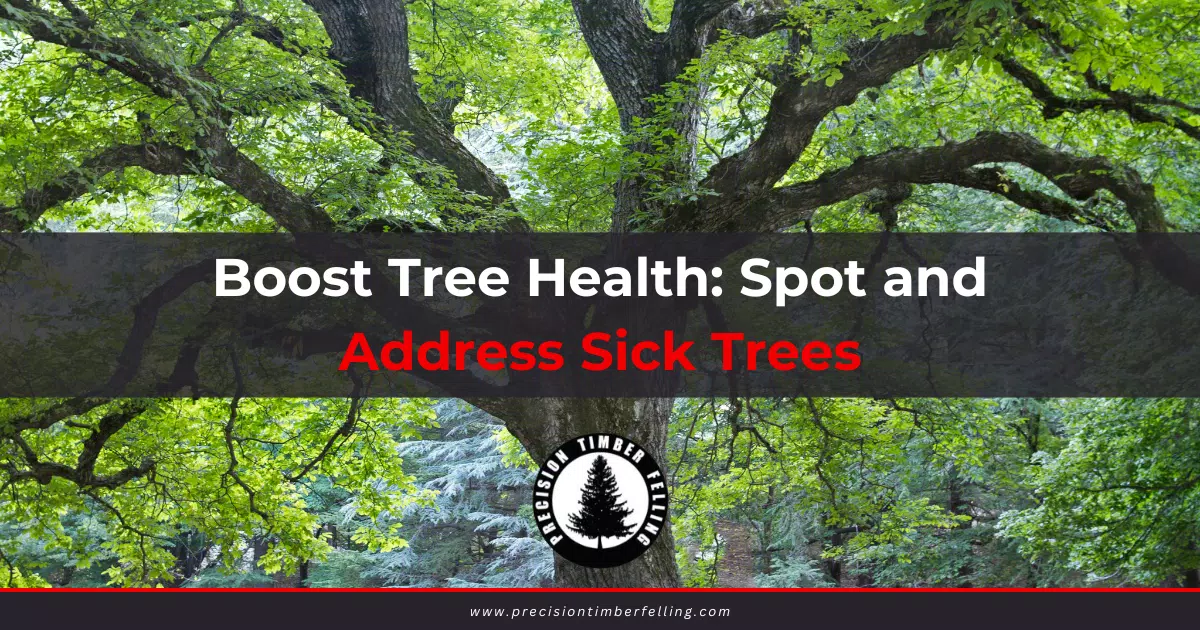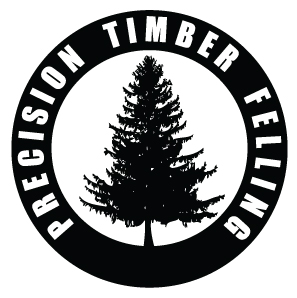Boost Tree Health: Spot and Address Sick Trees
Boosting tree health is vital for our environment’s well-being and our homes’ safety. Recognizing the signs of hazardous trees and taking proper preventive care to ensure disease prevention is essential. As a homeowner, you play a crucial role in enhancing the health of the trees in your yard. In this article, we’ll explore how to spot and address sick trees, including the common ailments of trees such as coconut palm trees, and provide practical tips for urgent and accessible care. By adopting a proactive approach to health care, you can enjoy the benefits of a thriving, healthy tree while preventing potential hazards.
What are the Common Tree Health Problems?
Trees are a vital part of the landscape, but like all living things, they can suffer from various health problems. Recognizing these issues early can help maintain the overall health and longevity of your trees. Many common tree health problems stem from environmental stressors, pests, and diseases. Below are some of the most prevalent issues trees face and how you can manage them to ensure your trees thrive.
Discolored Leaves
Discolored leaves can indicate several underlying issues, such as nutrient deficiencies, improper watering, or diseases. A common sign of stress, leaves may turn yellow, brown, or exhibit strange patterns. Regular watering and proper fertilization can prevent this problem, but it’s essential to diagnose the root cause early to avoid long-term damage.
Peeling Bark
Peeling bark is a condition where the bark begins to shed or crack, leaving the tree vulnerable to pests and infections. This often happens due to harsh weather conditions or diseases. Keeping trees hydrated and mulched can prevent peeling, and regular inspections will help detect any issues early.

Unusual Growth
Unusual growth includes things like twisted branches, burls, or excessive sprouting from the base of the tree. This can occur due to improper pruning, environmental stress, or disease. To prevent abnormal growth, ensure trees are pruned correctly and monitor for any unusual developments.
Fungal Infections
Fungal infections in trees are diseases caused by various types of fungi that invade and damage tree tissues. These infections can affect different parts of a tree, including the leaves, bark, roots, and vascular system, disrupting the tree’s ability to transport water and nutrients. Fungal infections often spread through spores carried by wind, water, insects, or by direct contact with infected trees. These diseases can weaken trees, making them more susceptible to further damage from pests, environmental stress, or structural failure.
Examples of Fungal Infections in Trees:
- Oak Wilt. Oak wilt is a common and deadly fungal disease that affects oak trees, caused by the fungus Bretziella fagacearum. It spreads through root systems or beetles that carry fungal spores. The disease blocks the tree’s vascular system, preventing water and nutrients from reaching the leaves, which causes them to wilt, turn brown, and eventually die. Red oaks are particularly vulnerable and can die within a few weeks of infection. Regular trimming can help your oak trees to stay healthy. Read our article on how to trim oak trees to know the dos and don’ts.
- Dutch Elm Disease. Caused by the fungi Ophiostoma ulmi and Ophiostoma novo-ulmi, this infection is spread by bark beetles or through root grafts. It disrupts the tree’s vascular system, leading to leaf wilting, yellowing, and eventually tree death. It primarily affects elm trees and has devastated many elm populations across North America and Europe.
- Anthracnose. This fungal disease affects a wide range of trees, including sycamores, maples, and oaks. It causes dark, sunken lesions on leaves, stems, and fruits, leading to leaf blight and premature leaf drop. While it typically does not kill trees, it can weaken them over time, making them more susceptible to other diseases or environmental stress.
- Armillaria Root Rot. Also known as honey fungus, this infection is caused by fungi in the genus Armillaria. It affects the roots of trees, causing decay and weakening the tree’s stability. Symptoms include yellowing leaves, dieback of branches, and in severe cases, tree death. This disease affects many tree species, including oaks, maples, and pines.
Fungal infections can be managed through proper care, including removing infected branches, applying fungicides, and ensuring the tree’s overall health through proper watering, pruning, and avoiding injury to the tree.
Insect Infestations

How Can I Properly Do Tree Inspection?
A healthy urban forest begins with proper tree health management. To keep trees healthy and thriving, property owners should perform routine inspections on a regular basis.
By examining tree trunks, limbs, and bark, you can identify early signs of stress or illness and take action to maintain the well-being of your urban trees.
Routine Visual Checks
A simple way to monitor tree health is by conducting routine visual checks. Look for changes in leaf color, leaf drop, or the presence of dead wood. These could indicate an unhealthy tree. Additionally, inspect the tree trunk for any signs of decayed wood or loose bark, which may suggest a structural issue or disease.
Looking for Signs of Stress
Stress in trees can manifest in a wide range of symptoms. Pay close attention to tree limbs, tree bark, and the critical root zone. Indications of stress may include poor tree architecture, weak branch unions, or co-dominant branches. Mature trees and fruit trees require special attention, as aspects of tree health may vary between tree species and trees’ age.
Evaluating Tree Growth Patterns
Assess the overall growth pattern of your trees, looking for any signs of decline or unusual development. The presence of dead trees, excessive leaf drop, or unhealthy branch tips can indicate a need for a comprehensive tree health assessment.
Monitoring tree circumference, tree cover, and the condition of structural roots is also crucial in maintaining the health of your urban forest.
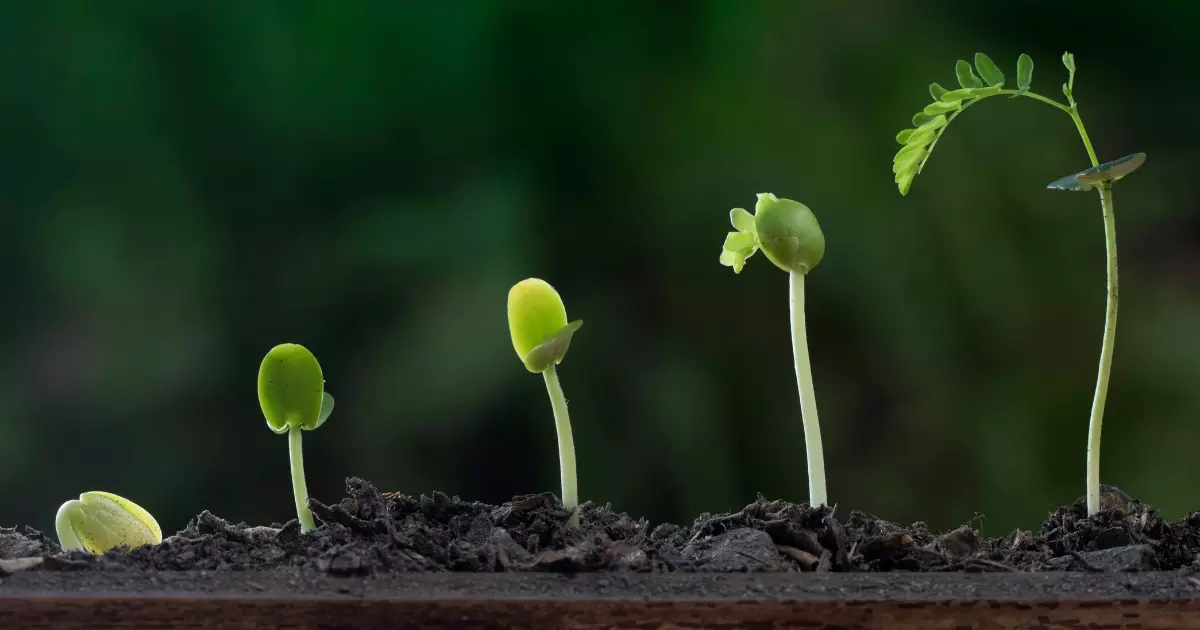
Consulting with Professionals
If you suspect a hazardous tree or unsafe conditions, reach out to a certified tree inspector for a tree risk assessment. One of the benefits of hiring a local tree arborist is that they know how to take care of your trees.
Precision Timber Felling are professional tree inspectors who can provide valuable insights into the care of trees, including recommendations for annual tree care plans, maintenance practices, and addressing air pollution.
With our expertise, you can ensure your precious trees’ continued health and safety and prevent potential property damage.
By following these proper tree inspection techniques, you’ll be better equipped to promote tree health and preserve the beauty of your urban forest. Remember, proactive tree health management is critical to preventing issues and maintaining a lush, vibrant environment for all to enjoy.
How Can I Keep My Trees Healthy?
Taking care of your trees is essential for maintaining tree health and preventing decay fungi, abrupt death, or unsafe conditions. With a few simple steps, you can ensure your trees are in optimum condition, and your property remains intact.
Here are some preventative measures to help keep your trees healthy and strong.
Proper Watering Techniques
Trees need the right amounts of water to thrive, but keeping them from over-watering or under-watering them is crucial. To maintain a balanced water table, be attentive to the weather, real soil moisture, and the specific needs of your tree species. Monitor the root collar circumference to spot any adverse conditions early on.
Mulching and Fertilization
Mulching helps preserve soil moisture and provides nutrients for your trees. Use organic mulch, like wood chips or compost, around the base of your trees, taking care not to pile it against the trunk. Fertilization promotes annual trunk diameter growth and overall forest health.
Consult an expert for the best fertilizer based on tree species and adjacent soil volumes.
Regular Pruning and Trimming
As trees age, they may require more attention to keep them in good shape. Regular pruning and trimming help prevent tree decline and maintain a healthy tree structure. Remove dead or damaged branches to improve the tree’s appearance and reduce disease risk.
Always be cautious when pruning branches over a few inches in diameter, and consider hiring a professional for larger jobs.

Pest Control Methods
Pests can cause significant damage to trees and jeopardize their overall health. Monitor your trees for signs of infestation and act promptly if you notice any issues. Implement environmentally friendly pest control methods, such as introducing beneficial insects or using organic repellents.
Consult a tree care professional for additional soil management and treatment options in more severe cases.
How Can I Address My Sick Trees Early?
Diagnose the Problem
Tree health is essential for maintaining a beautiful and safe landscape. To keep your tree healthy, you must first diagnose the issue. Carefully inspect the tree canopy, looking for discolored leaves or dead wood. Examine the tree limb and bark for signs of distress or damage. Construction projects or other external factors can sometimes impact the structural roots or critical root mass, leading to an unsafe tree.
Treat Tree Diseases
Once you have identified the problem, it’s time to take action. The health condition of your tree and the specific issue it faces will determine the appropriate treatment. For mature trees, preserving as much sound wood as possible is essential.
However, the aging of trees may require additional care, such as pruning or applying specialized treatments. If you need help with the best approach, consult a professional for tree health advice.
Hire Professional Arborists
Not all tree health problems can be resolved by homeowners. In some cases, the risk for the size or location of the tree may require expert intervention. Arborists who offer professional tree care services have the knowledge, experience, and equipment to address complex tree health issues while keeping your property intact.

Consider Tree Removal
In some instances, tree removal may be the best option for maintaining a healthy landscape. Factors like tree health, safety concerns, or interference with property structures can influence this decision. Tree removal costs can vary, so weighing the benefits against the expense is essential.
Consult a tree care professional to determine if removing the tree is the best course of action for your specific situation.
What are the Benefits of Healthy Trees?
Maintaining the tree health of the green giants around your home is more important than you think. Not only do healthy trees add a touch of beauty to your property, but they also offer a myriad of health benefits that you may need to realize. Let’s explore some fantastic advantages of keeping our precious trees in tip-top condition.
Enhanced Curb Appeal
A well-maintained, healthy tree can work wonders for your property’s overall look. Vibrant, lush foliage adds a natural charm to your home, making it the envy of the neighborhood. Conversely, dead trees or those in poor health can be an eyesore and even lead to property damage.
Improved Air Quality
Did you know that trees play a crucial role in reducing air pollution? By absorbing harmful pollutants, they help to improve the air quality in your surroundings. Conversely, an unhealthy tree may be less effective in this essential function.
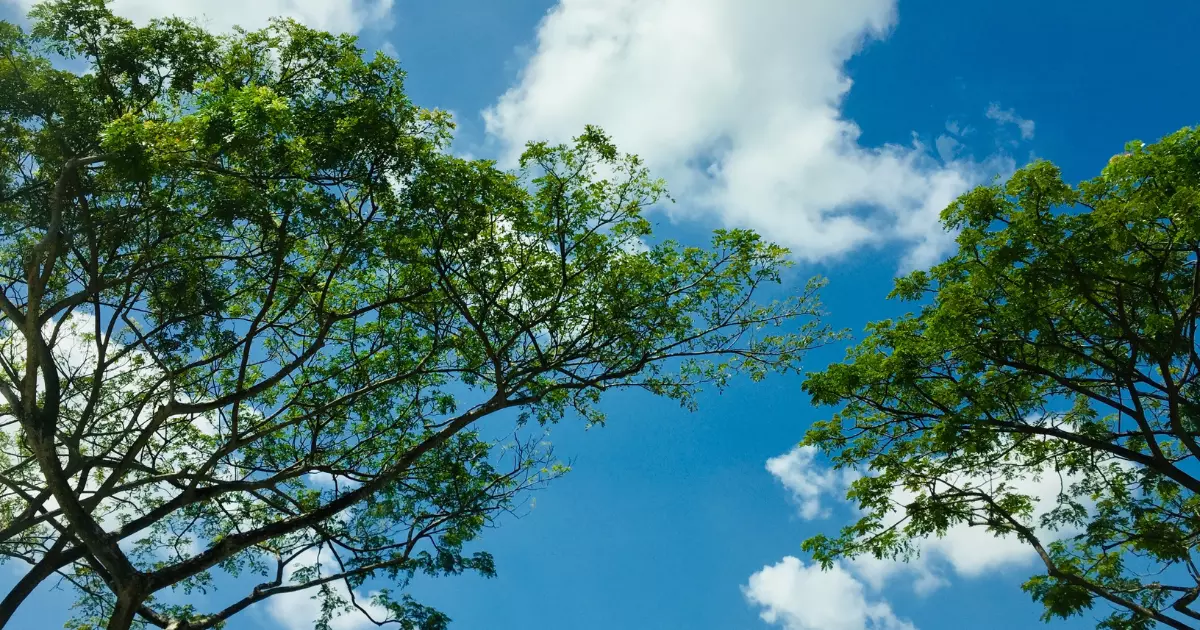
Support Local Ecosystems
Trees are home to various creatures, from chirping birds to busy squirrels. A tree in good health condition provides a safe and nurturing environment for these little critters, contributing to a thriving local ecosystem. Unhealthy or dead trees can put these habitats at risk.
Increase Property Value
A well-kept, flourishing landscape featuring healthy trees can significantly boost your property’s value. Prospective buyers often appreciate a property with robust, attractive trees, which indicates that the property has been well-cared for. Plus, a comprehensive tree risk assessment can provide peace of mind to potential buyers.
Embrace Tree Health: Partner with Precision Timber Felling
In conclusion, boosting tree health is crucial for maintaining a thriving and beautiful environment around your home. By learning to spot and address sick trees, you can prevent lasting damage and ensure that your green space remains vibrant for years. Embracing proactive tree care, such as regular inspections and preventative measures, is essential to being a responsible tree owner.
Don’t hesitate to contact Precision Timber Felling at 970 218 1620 for professional tree health advice, advanced arborist tree care, and comprehensive tree health assessments. We are committed to helping you cultivate a healthy and flourishing landscape. We proudly offer a 10% discount for veterans, law enforcement, and senior citizens.

